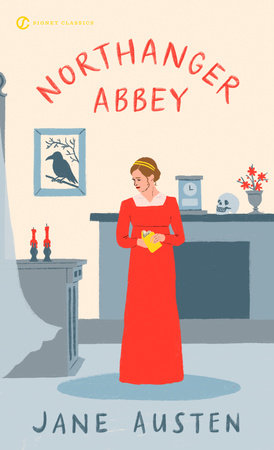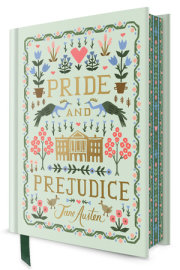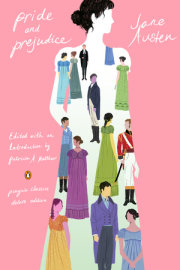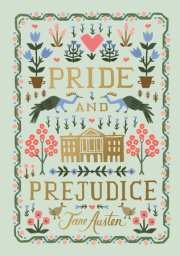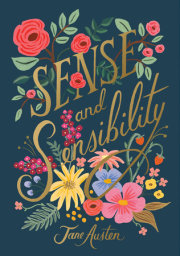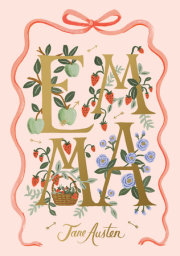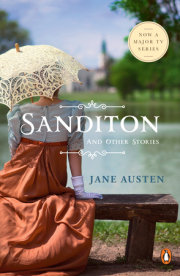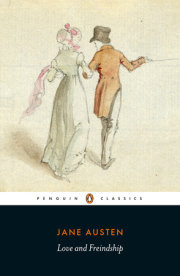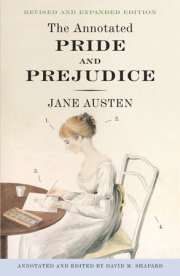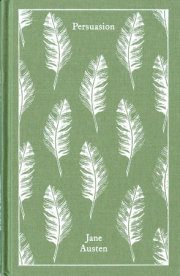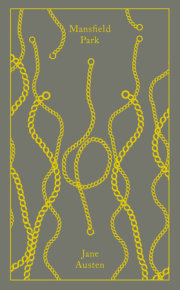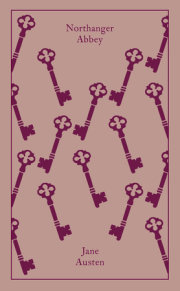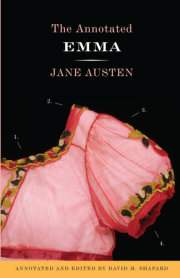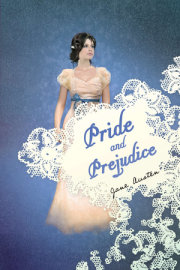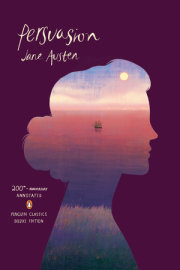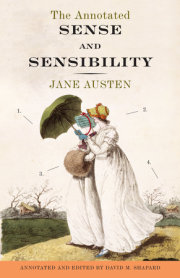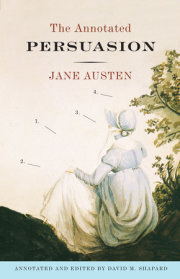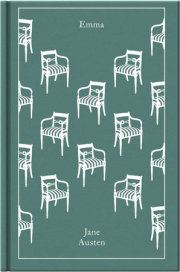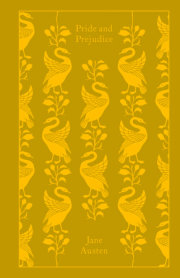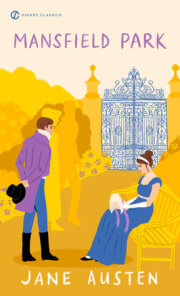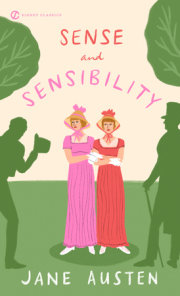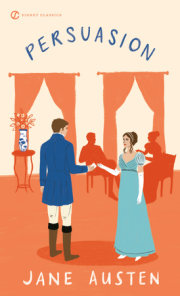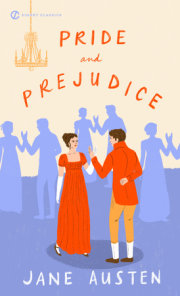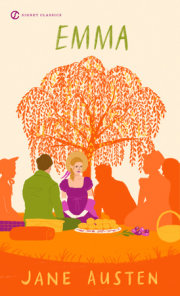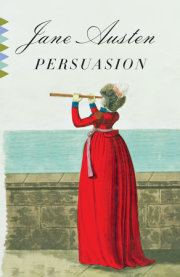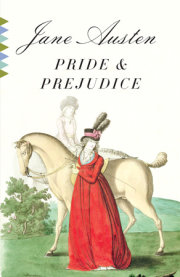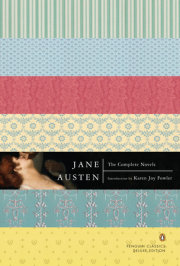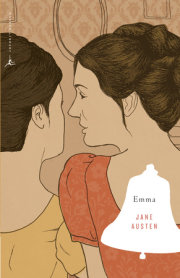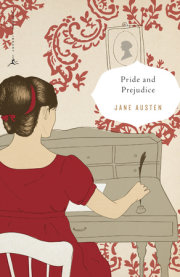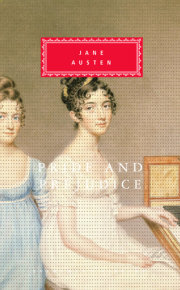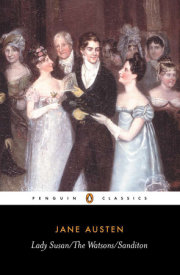Chapter 1No one who had ever seen Catherine Morland in her infancy wouldhave supposed her born to be an heroine. Her situation in life, thecharacter of her father and mother; her own person and disposition,were all equally against her. Her father was a clergyman, withoutbeing neglected, or poor, and a very respectable man, thoughhis name was Richard—and he had never been handsome. He had aconsiderable independence besides two good livings—and he wasnot in the least addicted to locking up his daughters. Her motherwas a woman of useful plain sense, with a good temper, and, whatis more remarkable, with a good constitution. She had three sonsbefore Catherine was born; and instead of dying in bringing thelatter into the world, as anybody might expect, she still livedon—lived to have six children more—to see them growing uparound her, and to enjoy excellent health herself. A family often children will be always called a fine family, where there areheads and arms and legs enough for the number; but the Morlandshad little other right to the word, for they were in general veryplain, and Catherine, for many years of her life, as plain as any.She had a thin awkward figure, a sallow skin without colour, darklank hair, and strong features;—so much for her person; —and notless unpropitious for heroism seemed her mind. She was fond ofall boy's plays, and greatly preferred cricket not merely to dolls,but to the more heroic enjoyments of infancy, nursing a dormouse,feeding a canary-bird, or watering a rose-bush. Indeed she had notaste for a garden; and if she gathered flowers at all, it was chieflyfor the pleasure of mischief—at least so it was conjectured fromher always preferring those which she was forbidden to take. —Suchwere her propensities—her abilities were quite as extraordinary.She never could learn or understand anything before she was taught;and sometimes not even then, for she was often inattentive, andoccasionally stupid. Her mother was three months in teaching heronly to repeat the "Beggar's Petition"; and after all, her nextsister, Sally, could say it better than she did. Not that Catherinewas always stupid, —by no means; she learnt the fable of "The Hareand Many Friends" as quickly as any girl in England. Her motherwished her to learn music; and Catherine was sure she should likeit, for she was very fond of tinkling the keys of the old forlornspinner; so, at eight years old she began. She learnt a year,and could not bear it; —and Mrs. Morland, who did not insist on herdaughters being accomplished in spite of incapacity or distaste,allowed her to leave off. The day which dismissed the music-masterwas one of the happiest of Catherine's life. Her taste for drawingwas not superior; though whenever she could obtain the outside ofa letter from her mother or seize upon any other odd piece of paper,she did what she could in that way, by drawing houses and trees,hens and chickens, all very much like one another. —Writing andaccounts she was taught by her father; French by her mother: herproficiency in either was not remarkable, and she shirked herlessons in both whenever she could. What a strange, unaccountablecharacter!—for with all these symptoms of profligacy at tenyears old, she had neither a bad heart nor a bad temper, was seldomstubborn, scarcely ever quarrelsome, and very kind to the littleones, with few interruptions of tyranny; she was moreover noisyand wild, hated confinement and cleanliness, and loved nothing sowell in the world as rolling down the green slope at the back ofthe house.
Such was Catherine Morland at ten. At fifteen, appearances weremending; she began to curl her hair and long for balls; her complexionimproved, her features were softened by plumpness and colour, hereyes gained more animation, and her figure more consequence. Herlove of dirt gave way to an inclination for finery, and she grewclean as she grew smart; she had now the pleasure of sometimeshearing her father and mother remark on her personal improvement."Catherine grows quite a good-looking girl—she is almost prettytoday," were words which caught her ears now and then; and howwelcome were the sounds! To look almost pretty is an acquisitionof higher delight to a girl who has been looking plain the firstfifteen years of her life than a beauty from her cradle can everreceive.
Mrs. Morland was a very good woman, and wished to see her childreneverything they ought to be; but her time was so much occupied inlying-in and teaching the little ones, that her elder daughterswere inevitably left to shift for themselves; and it was not verywonderful that Catherine, who had by nature nothing heroic abouther, should prefer cricket, baseball, riding on horseback, andrunning about the country at the age of fourteen, to books—orat least books of information—for, provided that nothing likeuseful knowledge could be gained from them, provided they wereall story and no reflection, she had never any objection to booksat all. But from fifteen to seventeen she was in training for aheroine; she read all such works as heroines must read to supplytheir memories with those quotations which are so serviceable andso soothing in the vicissitudes of their eventful lives.
From Pope, she learnt to censure those who
"bear about the mockery of woe."
From Gray, that
"Many a flower is born to blush unseen,
"And waste its fragrance on the desert air."
From Thompson, that —
"It is a delightful task
"To teach the young idea how to shoot."
And from Shakespeare she gained a great store of information —
amongst the rest, that —
"Trifles light as air,
"Are, to the jealous, confirmation strong,
"As proofs of Holy Writ."
That
"The poor beetle, which we tread upon,
"In corporal sufferance feels a pang as great
"As when a giant dies."
And that a young woman in love always looks —
"like Patience on a monument
"Smiling at Grief."
So far her improvement was sufficient—and in many other points shecame on exceedingly well; for though she could not write sonnets,she brought herself to read them; and though there seemed nochance of her throwing a whole party into raptures by a prelude onthe pianoforte, of her own composition, she could listen to otherpeople's performance with very little fatigue. Her greatestdeficiency was in the pencil—she had no notion of drawing—not enough even to attempt a sketch of her lover's profile, thatshe might be detected in the design. There she fell miserablyshort of the true heroic height. At present she did not know herown poverty, for she had no lover to portray. She had reached theage of seventeen, without having seen one amiable youth who couldcall forth her sensibility, without having inspired one real passion,and without having excited even any admiration but what was verymoderate and very transient. This was strange indeed! But strangethings may be generally accounted for if their cause be fairlysearched out. There was not one lord in the neighbourhood; no—not even a baronet. There was not one family among their acquaintancewho had reared and supported a boy accidentally found at their door—not one young man whose origin was unknown. Her father had noward, and the squire of the parish no children.
But when a young lady is to be a heroine, the perverseness of fortysurrounding families cannot prevent her. Something must and willhappen to throw a hero in her way.
Mr. Allen, who owned the chief of the property about Fullerton,the village in Wiltshire where the Morlands lived, was ordered toBath for the benefit of a gouty constitution—and his lady, agood-humoured woman, fond of Miss Morland, and probably aware thatif adventures will not befall a young lady in her own village, shemust seek them abroad, invited her to go with them. Mr. and Mrs.Morland were all compliance, and Catherine all happiness.
Copyright © 2008 by Jane Austen. All rights reserved. No part of this excerpt may be reproduced or reprinted without permission in writing from the publisher.

